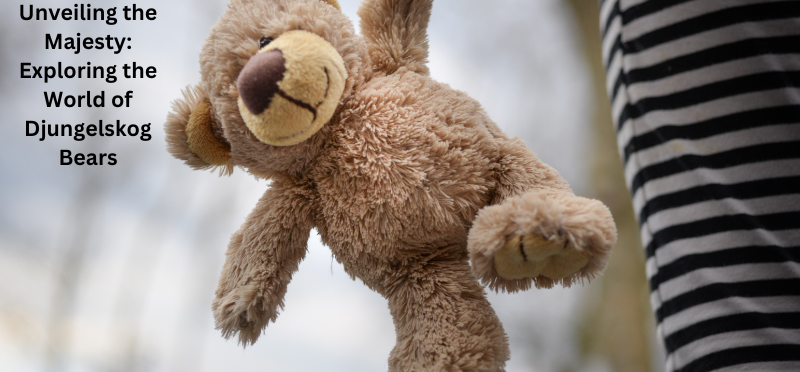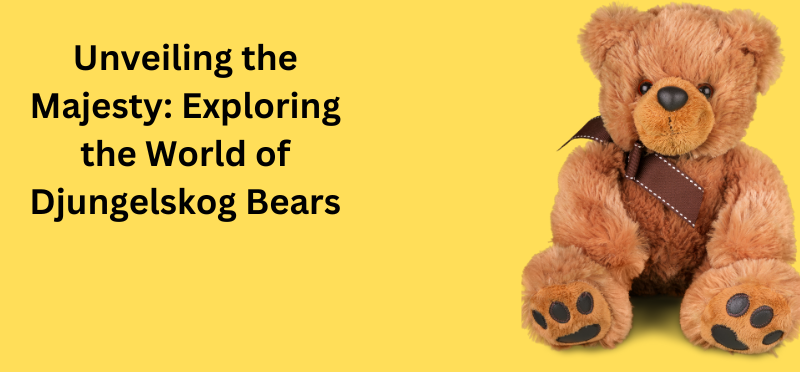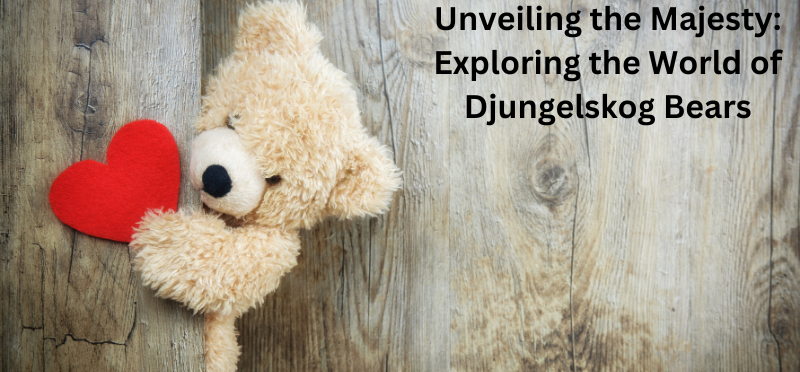In this article, we delve into the charming global nature of the Djungelskog, an enigmatic creature that has fascinated and intrigued researchers and nature enthusiasts alike. From its origins to its conduct within the wild, we discover the various aspects that make Djungelskog such a completely unique and exquisite species.
Origin and Meaning of Djungelskog bear
The time period “Djungelskog” originates from Swedish, wherein “Djungel” way jungle and “Skog” method forest. Together, they paint a photo of a creature deeply rooted within the wilderness, embodying the spirit of the untamed. This call flawlessly encapsulates the bear’s natural habitat and its affinity for dense, wooded regions.
Physical Characteristics of Djungelskog
Djungelskog bears are regarded for their imposing length and ambitious presence. They commonly range from [insert range] on top and can weigh anywhere between [insert range] kilograms. Their fur is thick and dense, providing insulation in opposition to the cruel elements in their surroundings. The colour of Djungelskog bears varies, with sun shades of brown, black, and on occasion even a touch of red or blonde.

Habitat and Distribution
Djungelskog bears are predominantly discovered in [insert regions]. They inhabit dense forests, mountainous regions, and from time to time task into greater open landscapes looking for meals. Their distribution is influenced via factors including food availability, human hobby, and habitat destruction.
Diet and Feeding Habits
As omnivores, Djungelskog bears have a numerous eating regimen that consists of berries, nuts, roots, insects, and every so often small mammals or fish. During certain times of the year, they will pay attention to particular meal assets, consisting of salmon at some stage in the spawning season or berries for the duration of the summer months. “Looking to purchase a bear from Amazon? Explore Amazon for wide selection and bring the majesty of these magnificent creatures into your home today!”
Behavior and Social Structure
Despite their enforcing length, Djungelskog bears are frequently solitary creatures. They roam their territories by myself, except in the course of the mating season or whilst a mother is caring for her cubs. Communication among these bears usually includes vocalizations, frame language, and scent marking.
Read also- How Old is Princess Peach: Unraveling Super Mario’s Mystery
Reproduction and Lifecycle
Female Djungelskog bears commonly supply delivery to one to three cubs in the course of the winter months, after a period of hibernation. The cubs continue to be with their mother for about [insert timeframe] before venturing out on their personal. The lifecycle a Djungelskog undergoes is intently tied to the seasonal modifications of their environment.

Conservation Status
Unfortunately, Djungelskog bears face severa threats to their survival, along with habitat loss, poaching, and human-flora and fauna conflict. Conservation efforts aim to mitigate these threats via habitat safety, community education, and anti-poaching measures.
Interaction with Humans
Throughout records, Djungelskog bears have held a sizable area in human way of life and folklore. They are revered as symbols of electricity, wisdom, and resilience in various indigenous traditions. However, human encroachment into their habitat has led to multiplied conflicts, highlighting the significance of promoting coexistence between people and the natural world.
Myths and Folklore Surrounding Djungelskog
The Djungelskog functions prominently within the myths and folklore of many cultures. Tales in their prowess in warfare, their cunning intelligence, and their mystical talents abound, weaving a wealthy tapestry of legend and lore that keeps captivating imaginations to these days.

Research and Study
Scientific research performs a vital role in understanding Djungelskog bears and informing conservation efforts. Researchers have a look at numerous elements of their conduct, ecology, and physiology to gain insights into their desires and vulnerabilities.
Captivity and Rehabilitation
In some cases, Djungelskog bears might also locate themselves in captivity because of injuries, orphaning, or other human-associated factors. Rehabilitation centers work tirelessly to offer these bears with the care and support they need to sooner or later go back to the wild.
Human-Djungelskog Conflict
Conflicts among humans and Djungelskog bears often arise due to opposition for assets or perceived threats to human safety. Finding sustainable solutions to mitigate those conflicts is essential for the long-term survival of each species.

Promotion of Coexistence
Efforts to promote coexistence among people and Djungelskog bears contain measures including habitat conservation, responsible waste control, and public schooling. By fostering mutual recognition and information, we are able to create a world where each person and the natural world thrive.
Conclusion
In the end, the Djungelskog bear is a fascinating and complicated species that embodies the beauty and resilience of the herbal world. Through sustained research, conservation efforts, and a dedication to coexistence, we can make sure that future generations may have the opportunity to marvel at those magnificent creatures in the wild.
FAQs on Djungelskog bear
1. Are Djungelskog bears dangerous to human beings?
Djungelskog bears are generally shy and prefer to avoid humans. However, they could grow to be competitive if they feel threatened or startled.
2. How can I assist defend Djungelskog bears?
You can guide conservation efforts through donating to reliable agencies, advocating for habitat safety, and training accountable wildlife viewing.
3. Do Djungelskog bears hibernate?
Yes, Djungelskog bears normally hibernate throughout the icy months to conserve power whilst meals are scarce.
4. What need to I do if I encounter a Djungelskog in the wild?
Remain calm, slowly returned away, and keep away from surprising actions. Do not run or method the endure, and give it masses of area to retreat.



